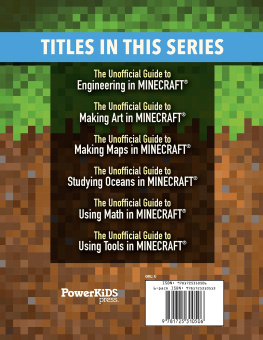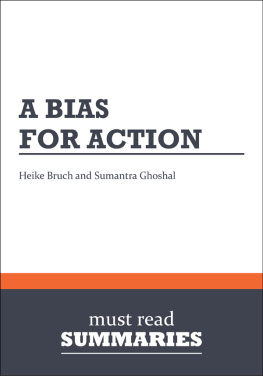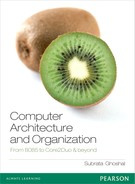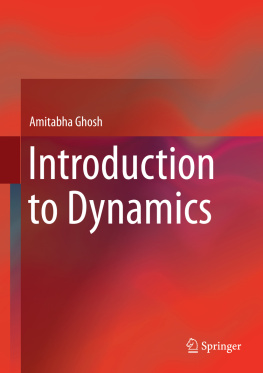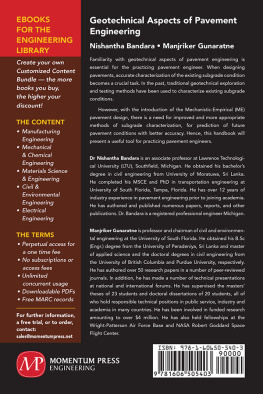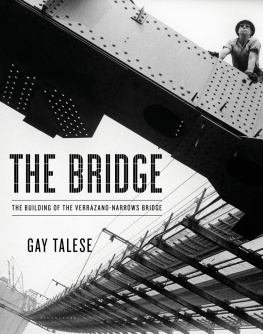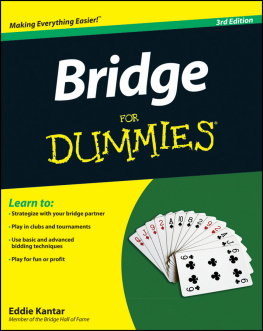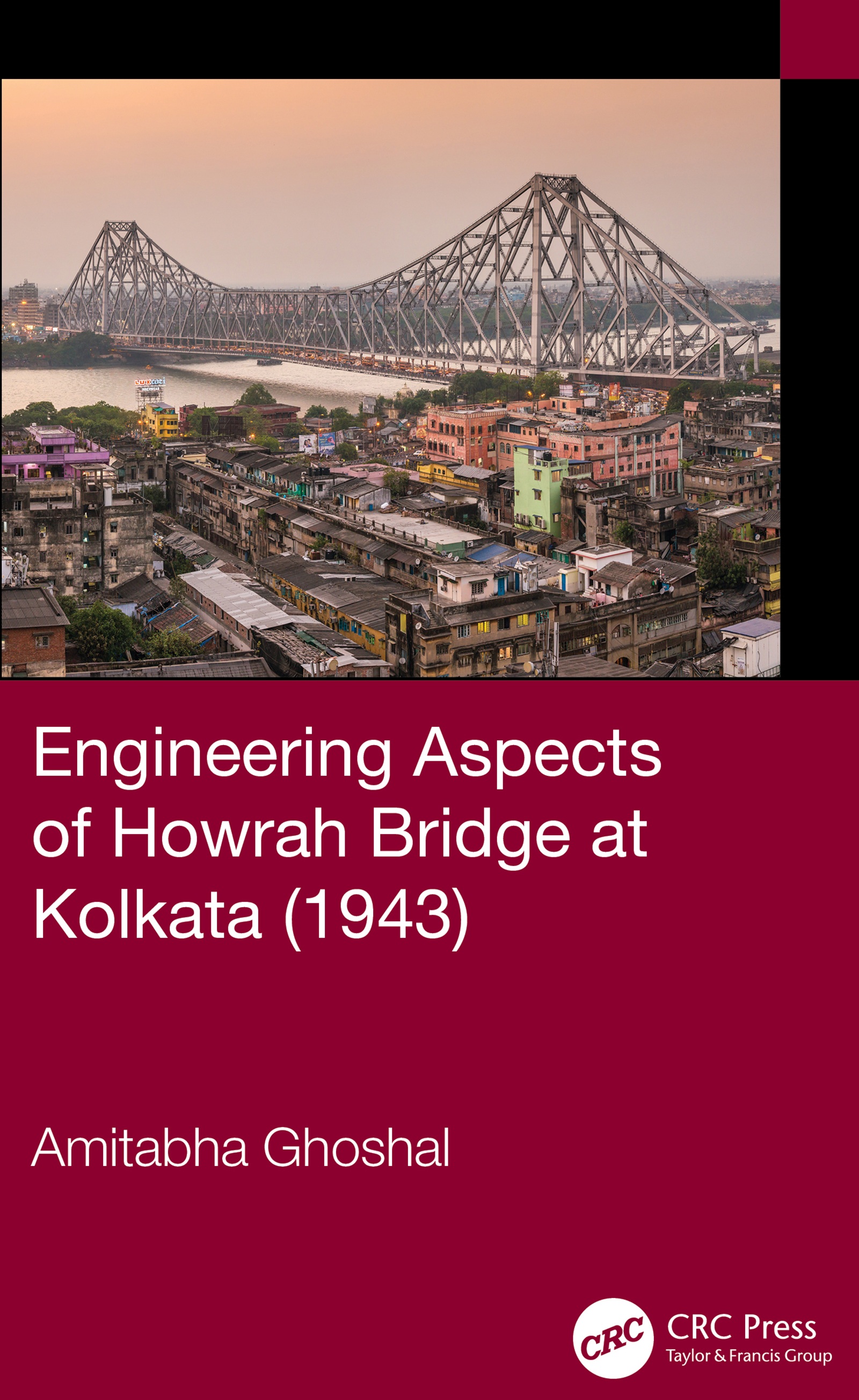
Table of Contents
Guide
Pages
Engineering Aspects of Howrah Bridge at Kolkata (1943)
First edition published 2021
by CRC Press
6000 Broken Sound Parkway NW, Suite 300, Boca Raton, FL 33487-2742
and by CRC Press
2 Park Square, Milton Park, Abingdon, Oxon, OX14 4RN
2021 Amitabha Ghoshal
CRC Press is an imprint of Taylor & Francis Group, LLC
Reasonable efforts have been made to publish reliable data and information, but the author and publisher cannot assume responsibility for the validity of all materials or the consequences of their use. The author and publishers have attempted to trace the copyright holders of all material reproduced in this publication and apologize to copyright holders if permission to publish in this form has not been obtained. If any copyright material has not been acknowledged please write and let us know so we may rectify in any future reprint.
Except as permitted under U.S. Copyright Law, no part of this book may be reprinted, reproduced, transmitted, or utilized in any form by any electronic, mechanical, or other means, now known or hereafter invented, including photocopying, microfilming, and recording, or in any information storage or retrieval system, without written permission from the publishers.
For permission to photocopy or use material electronically from this work, access
Trademark notice: Product or corporate names may be trademarks or registered trademarks and are used only for identification and explanation without intent to infringe.
Library of Congress Cataloging-in-Publication Data
Names: Ghoshal, Amitabha, author.
Title: Engineering aspects of Howrah Bridge at Kolkata (1943) / Amitabha Ghoshal.
Description: First edition. | Boca Raton, FL : CRC Press, 2021. | Includes bibliographical references and index.
Identifiers: LCCN 2021007642 (print) | LCCN 2021007643 (ebook) | ISBN 9780367544744 (hardback) | ISBN 9780367544799 (paperback) | ISBN 9781003089438 (ebook)
Subjects: LCSH: Howrah Bridge (Howrah and Kolkata, India)--History.
Classification: LCC TG104.K65 G46 2021 (print) | LCC TG104.K65 (ebook) | DDC 624.2/19095414--dc23
LC record available at https://lccn.loc.gov/2021007642
LC ebook record available at https://lccn.loc.gov/2021007643
ISBN: 978-0-367-54474-4 (hbk)
ISBN: 978-0-367-54479-9 (pbk)
ISBN: 978-1-003-08943-8 (ebk)
Typeset in Times
by SPi Global, India
This book is dedicated to the memory of the Indian workmen who worked through rain and sun, at dizzy heights, to improve the daily lives of city dwellers; to men like Omeruddin Khan and Harbans Singh, who mastered the skill and contributed to successful completion of this and many more large bridges in India.
Howrah Bridge had been a part of my weekend commute from Bengal Engineering College (BE College), via Howrah to my residence in Calcutta for the four years that I spent in the college hostel. Every trip across the bridge inspired me to dream of building bridges like it!
It was not just an inspiration but also my instructor! Later, when I received an opportunity to be a part of the successful tender design process for the next bridge about a kilometer downstream (Vidyasagar Setu), I studied and critically scrutinized all the published literature about how the old bridge was designed and built. I was fortunate to have been apprenticed, and later employed, by the BBJ Construction Co. (BBJ), the Calcutta-based company that was involved in construction of Howrah Bridge. BBJ subsequently went on to build almost all the major bridges using steelwork in the country. They were also the EPC contractor for superstructure of the Vidyasagar Setu, the first major cable-stayed bridge in the country, at that time planned as the longest cable-stayed span in the world.
The narratives of Howrah Bridge, as recorded by the engineers responsible for the bridge, fascinated me, and when I was requested by the publishers to write an engineering book my immediate first choice was the story of Howrah Bridge. The task proved more challenging than I had thought, but my publishers were kind and patient in giving me sufficient time to complete the book.
The bridge did more than allowing people of the twin city to cross this mighty river, a branch of Holy Ganges, revered and loved by the Indians as a part of their history and mythology alike. It made the engineering community across the world take note of the innovations that went into the bridge, and the Indians proud that the bridge could be built by Indian workmen and engineers, with most materials sourced from within the country, supervised by a small group of bridge engineers from Britain who were highly ranked in their respective fields of specialization. Constructed in a very short period, much of which was during the Second World War when logistics everywhere were severely strained, the bridge stands as a tribute to the meticulous planning and foresight of the experts in charge. Built across a busy river and in a congested area of the city, construction work did not have any unplanned delay nor any accident worth mentioning.
Next page

